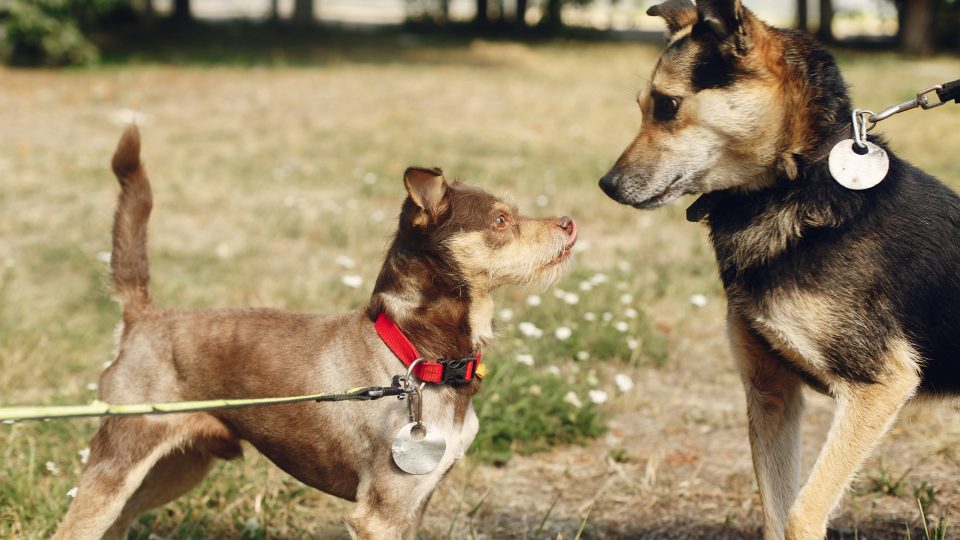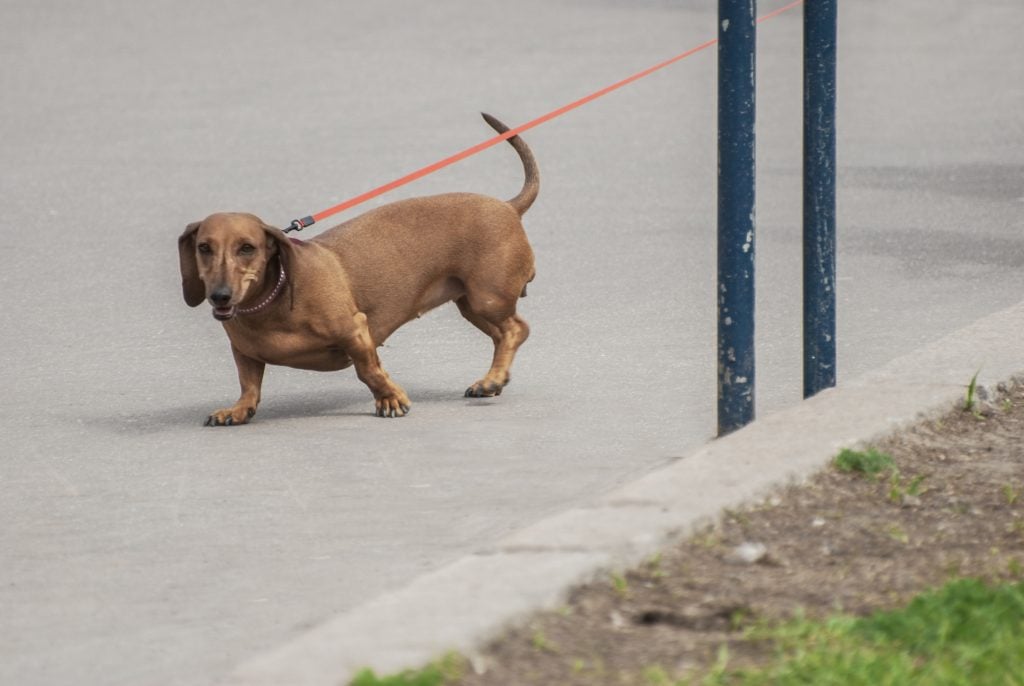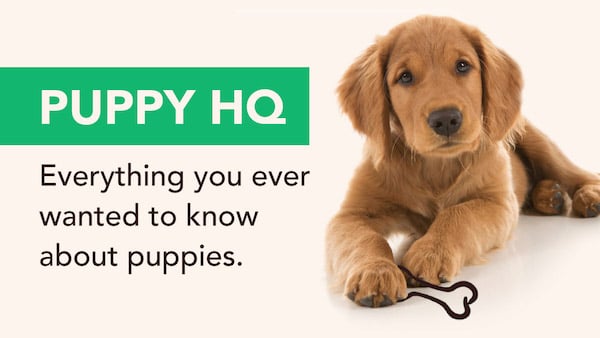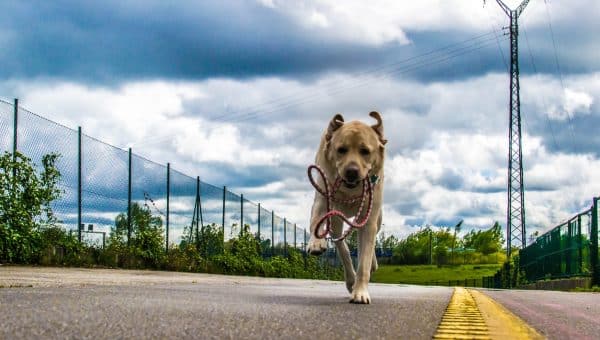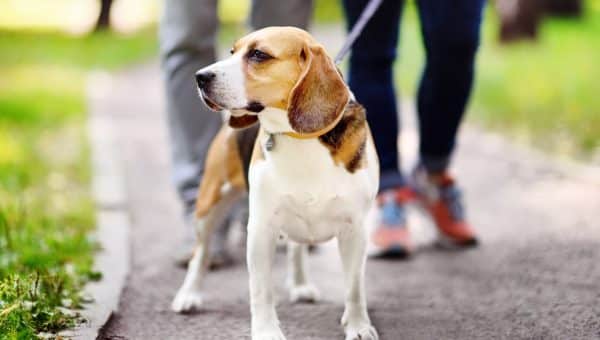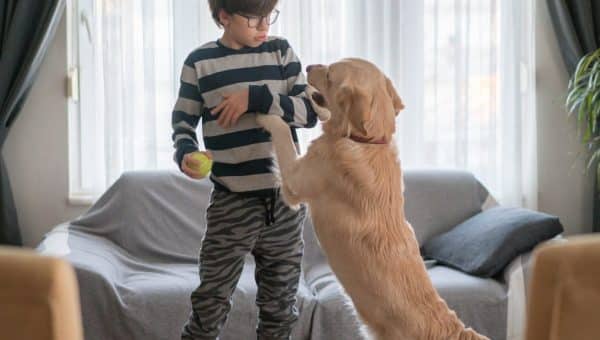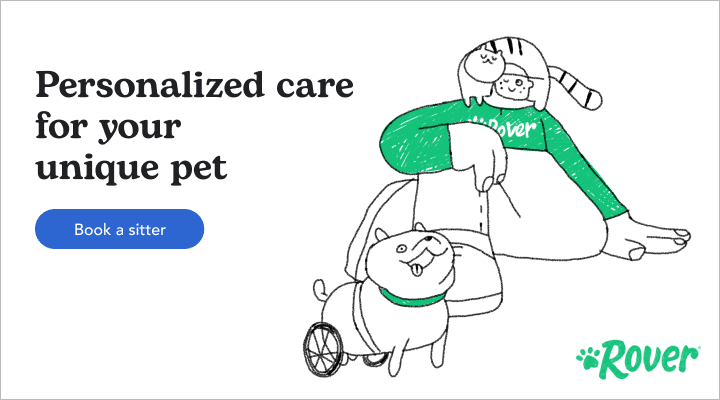Is your dog, well, dog-friendly? This is the question anyone with a leash reactive dog dreads.
As the owner of two leash reactive dogs, I’ve taken a number of classes and private sessions with trainers to determine the best way to manage my dog on a leash when he sees another dog. My dog Sherman is “flight” and my other dog Walter is “fight”. The techniques to train these two attitudes are the same, but the dogs’ overall reaction on leash are quite different. Both are walked individually, of course.
I attended a seminar with Grisha Stewart, M.A., CPDT-KA about a year ago and she shared a “reactivity chart,” which is used to gauge where a dog is emotionally as he encounters a trigger on walks.
When we talk about reactivity (or over-reactivity) we include a concept known as “threshold.” That is the reactivity threshold that trainers refer to when your dog is stressed. If the dog is “under threshold” they show loose body posture, soft mouth and ears, and they can take treats since they still feel safe. If they are “over threshold” you’ll see your dog growling, barking, snapping and perhaps lunging at another dog while on a leash.
Other signs that your dog is over threshold:
- It’s hard to stop your dog
- Dog is too focused on the trigger (the other dog on leash)
- It takes your dog more than two seconds to disengage from the trigger (turning away is difficult)
The goal is to keep them under threshold by using the following training techniques.
Training a leash reactive dog
Let’s play games! I love to play games on on every walk with both Sherman and Walter. These are essentially different ways to manage a leash reactive dog that often goes over threshold.
Reward eye contact
While your dog is on a leash, anytime your dog glances in your direction, reward him! These can be treats (always the case for my two dogs), playing with a toy, running a block, or simply pointing out a tree to sniff.
Start all of this in the absence of other dogs. This might mean going to a location where you know you’re not going to see a lot of dogs, such as a parking lot.
After a lot of practice, and now in the presence of other dogs, reward your dog for checking in with you EVERY. SINGLE. TIME. And of course, you should move away from any scary triggers. My dogs have a lot of trouble with proximity. So we play this game even when we are 2–3 blocks away from any dog.
U-Turn
This is exactly what it sounds like. When walking your leash reactive dog, you turn away from another dog that may be facing or walking toward you. I will throw a treat on the ground to turn my dog away from the trigger. This happens to me ALL the time. The trigger can be a dog that turns the corner toward me, or an off-leash dog. Your dog should be called away every time rather than be allowed to bark and lunge. The less he repeats his reactive behavior, the easier your life will become.
Start by watching for signs of stress, as this will help you determine what games to play and when a U-turn is the ONLY solution and games are out of the question.
Provide space
Always give your leash reactive dog a lot of distance. My best advice is to breathe and not freak out! Your dog feels this behavior right down the leash. With that in mind, just remember you are not alone!
Dog blogger and DIY expert, Rochelle BaRoss, is all too familiar with various ways to manage a leash reactive dog. Her dog Henry, an adorable terrier mix, is reactive on leash and she’s written about how she handles his behavior when on leash.
“Henry has been reactive since the week I adopted him and it has been an ongoing challenge ever since. Some of the most helpful tactics for us have included medication—specifically Prozac. I’ve noticed that he can think more clearly when he’s on it and actually decide if he wants to bark at another dog or not. Those milliseconds are absolutely priceless when it comes to training. I always carry a bag of training treats on our walks. They come in handy for threshold training or to serve as a distraction in a pinch,” explains BaRoss.
Setting your reactive dog up for success is some of the best advice I’ve received from trainers and behavior experts.
Resources
- American College of Veterinary Behaviorists (ACVB): Need a veterinarian who specializes in behavior? This directory is a great resource for owners who need some additional assistance with their dog’s reactivity.
- Dogs in Need of Space (DINOS): This website provides helpful tips and resources for “DINOS” owners, including recommendations for harnesses, vests, and collars that promote important messages, such as “I need space.” This additional communication can be especially helpful in areas where dogs are frequently walked.
- The Yellow Dog Project: This global movement is also aimed at helping identify dogs who need space. A yellow bandana or ribbon sends the following message: “Please do not pet me or approach me with your dog.”
The bottom line
Many dogs need space. If you live with a dog who deals with leash reactivity, there are many solutions and tools at your disposal. Don’t worry—it doesn’t mean you simply walk your dog at midnight.
